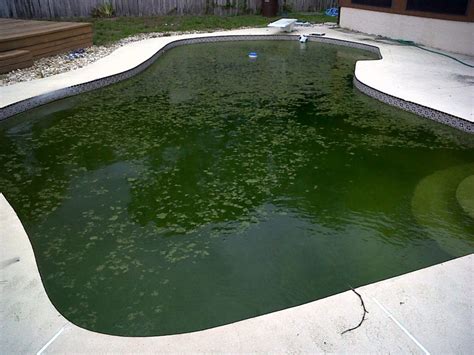Pool Algae Nightmare? This Fixes It Quickly
A green, slimy pool is nobody's dream. Dealing with algae is a common frustration for pool owners, but it doesn't have to be a major ordeal. This guide will help you identify the type of algae plaguing your pool and offer quick, effective solutions to get your pool sparkling clean again. We'll cover everything from prevention to treatment, so you can enjoy your pool without the algae worries.
What Type of Algae is in My Pool?
Identifying the type of algae is the first step in effective treatment. Different algae require different approaches. Here are the common culprits:
- Green Algae: This is the most common type, appearing as a cloudy green water or a green film on the pool walls and floor. It's usually easy to brush off.
- Mustard Algae: This yellow-brown algae is tougher to remove and often clings stubbornly to pool surfaces. It can stain plaster pools.
- Black Algae: This is the most stubborn type, appearing as black spots or streaks. It can penetrate the pool surface, making it difficult to eradicate. It often requires stronger chemicals and more aggressive treatment.
- Pink Algae: Also known as Gloecapsa magma, this algae often appears in the grout lines of tile or on other surfaces in the pool.
How Do I Tell the Difference Between Green and Black Algae?
Green algae is typically easier to remove, showing up as a general greening of the water or a visible film on surfaces. You can often brush it away relatively easily. Black algae, however, is deeply embedded and requires more intensive treatment. It appears as black spots or streaks that are difficult to brush off. If you can’t brush it away, it's likely black algae.
How to Quickly Clear Up Your Algaecide-Resistant Pool
If your pool is already overrun with algae, you'll need a multi-pronged approach. Here's a step-by-step guide:
-
Shock the Pool: This involves adding a large amount of chlorine (or non-chlorine shock) to the pool water. Follow the instructions on your chosen shock product carefully. Overdosing can be harmful, and underdosing will be ineffective.
-
Brush the Pool Thoroughly: Use a pool brush to scrub all surfaces, dislodging as much algae as possible. Pay particular attention to areas where algae tends to accumulate, such as the corners, steps, and waterline.
-
Vacuum the Pool: Vacuum the pool to remove any dislodged algae. Be sure to use a vacuum head designed for algae removal.
-
Clarify the Water: Adding a clarifying agent can help to clump the remaining algae particles, making them easier to filter out.
-
Run the Filter: Run your pool filter continuously for at least 24 hours to filter out the dead algae.
-
Test and Adjust Chemicals: After 24 hours, retest your pool water and adjust the chemical balance as needed. Maintain proper pH and alkalinity levels for optimal effectiveness.
-
Repeat as Necessary: If the algae persists, you may need to repeat the process. For stubborn black algae, a stronger algaecide may be necessary. Always follow the manufacturer's instructions carefully.
What is the Best Algaecide for Black Algae?
There's no single "best" algaecide, as effectiveness depends on several factors, including the type and severity of algae, the size of your pool, and your specific pool's chemistry. Many pool supply stores carry specialized algaecides formulated to tackle black algae. Consult a pool professional for advice if you are struggling with persistent black algae. They can often recommend the appropriate algaecide for your situation and guide you through the application process.
Preventing Future Algae Blooms
Preventing algae is much easier than treating it. Here are some key prevention strategies:
-
Regular Cleaning: Brush and vacuum your pool regularly to remove debris and prevent algae from taking hold.
-
Maintain Proper Chemical Balance: Regularly test and adjust your pool's pH, alkalinity, and sanitizer levels.
-
Use an Algaecide: Adding an algaecide regularly can help prevent algae growth, even with regular cleaning and chemical maintenance.
-
Proper Filtration: Ensure your pool filter is functioning properly and clean it regularly.
By following these steps and staying vigilant, you can keep your pool clear and algae-free, enjoying your summer without the hassle of an algae nightmare. Remember, consulting with a pool professional can provide tailored advice for your specific situation.

